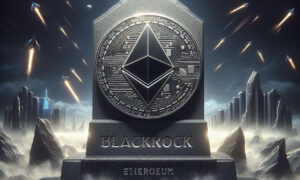Bit Digital Shifts Focus from Bitcoin to Ethereum: A Strategic Move

Bit Digital Transitions from Bitcoin Mining to ethereum Staking
Bit Digital Announces Major Shift in Operations
Bit Digital (BTBT), a publicly listed company specializing in digital assets, has revealed plans to cease its Bitcoin (BTC) mining activities and pivot towards becoming a company focused on ethereum (ETH) staking and treasury management. This strategic change signifies a notable transformation for the firm, which has previously operated Bitcoin mining facilities in the United States, Canada, and Iceland, and highlights a growing trend recognizing the economic benefits of ethereum.
Strategic Shift Towards ethereum
In a recent press release, Bit Digital outlined its strategy to liquidate its Bitcoin assets and reinvest the proceeds into ethereum. The company has been gradually increasing its ethereum holdings and has been involved in staking operations since 2022. As of March 31, 2025, Bit Digital reported holding 24,434.2 ETH and 417.6 BTC, valued at approximately $44.6 million and $34.5 million, respectively. The firm plans to convert its Bitcoin holdings into ethereum over time.
Evaluating Bitcoin Mining Operations
As part of this transition, Bit Digital is assessing its Bitcoin mining operations, which may lead to either their sale or closure. Any funds generated from this process will be directed towards ethereum investments. Additionally, the company has announced a public offering of its ordinary shares, intending to use the raised capital to acquire more ethereum. However, the specifics regarding the offering’s terms and size remain uncertain. This decision comes in light of escalating Bitcoin mining costs and a record-high hashrate.
Challenges in Bitcoin Mining
Charles Allen, CEO of BTCS, highlighted the challenges associated with Bitcoin mining, describing it as energy-intensive, reliant on hardware, and increasingly constrained by margins. In contrast, he noted that ethereum staking presents a more favorable economic model, offering returns without the burdensome energy expenses and rapidly depreciating equipment. Recent reports indicate that the cost of mining a single Bitcoin surged to $64,000 in Q1 2025, reflecting a 23% increase from $52,000 in Q4 2024, with projections suggesting costs could exceed $70,000 in the current quarter.
The Competitive Landscape
The competitive landscape for Bitcoin mining is intensifying, as evidenced by the rising difficulty level, which reached 126.98 trillion, driven by a 14-day average hashrate of 913.54 EH/s. Despite these challenges, transaction fees have remained low, accounting for only 1.3% of block rewards in May and dropping below 1% in June. Allen emphasized that Bitcoin miners often face diminishing returns due to high operational costs and the need for continuous infrastructure investment, which forces them to sell their Bitcoin to cover expenses, thereby increasing volatility in their holdings.
A New Approach with ethereum
In contrast, Allen argued that while Bitcoin treasuries provide exposure to BTC, they generate minimal revenue. He believes that an ethereum-centric strategy offers a hybrid solution, combining asset exposure with recurring yield without the high costs associated with mining. He anticipates that as the benefits of proof-of-stake become more widely recognized, more companies in the crypto space, particularly miners, will reconsider their operational strategies.
Market Reaction and Stock Performance
Despite the strategic shift, Bit Digital’s stock did not respond positively, with Google Finance reporting a 3.69% decline at market close. The stock fell further by 3.83% in after-hours trading, continuing a downward trend that has seen BTBT decrease by 29.4% over the past year.
In summary, Bit Digital’s transition from Bitcoin mining to ethereum staking reflects broader trends in the cryptocurrency market, as companies adapt to changing economic realities and seek more sustainable operational models.







